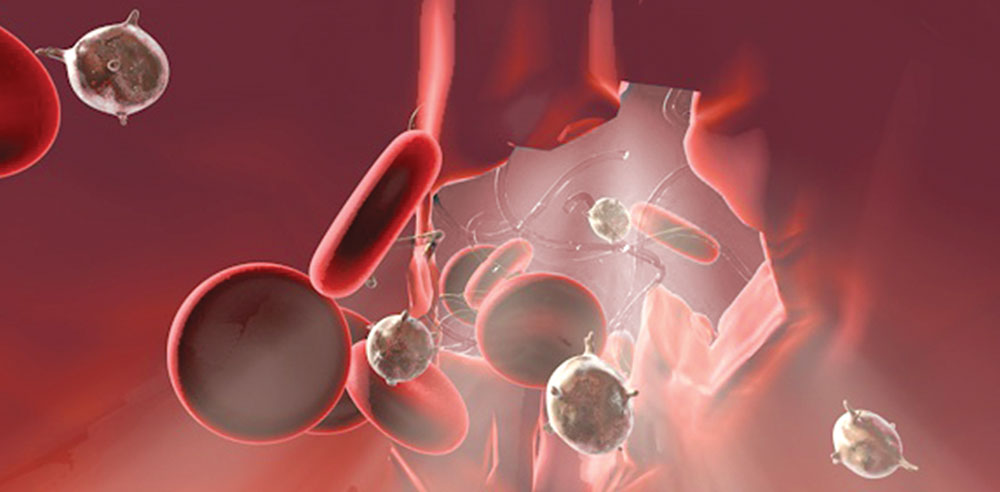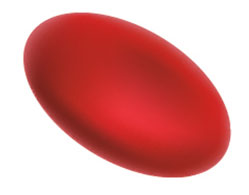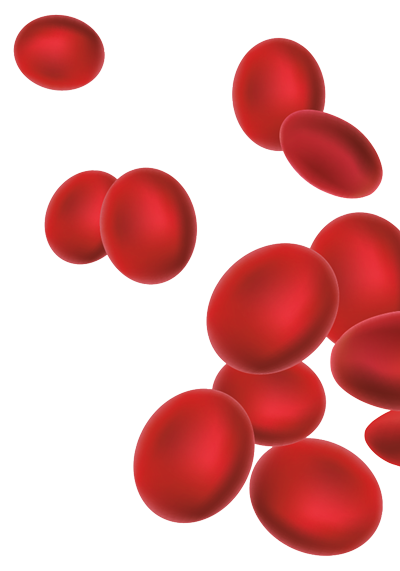
The protein known as von Willebrand factor (vWF) promotes blood clotting by helping platelets in blood stick to collagen within the walls of damaged blood vessels to form a plug that stops the bleeding from a wound.
 Under normal, healthy circulatory conditions, vWF keeps to itself. The large and mysterious glycoprotein moves through the blood, balled up tightly, its reaction sites unexposed. But when significant bleeding occurs, it springs into action, initiating the clotting process.
Under normal, healthy circulatory conditions, vWF keeps to itself. The large and mysterious glycoprotein moves through the blood, balled up tightly, its reaction sites unexposed. But when significant bleeding occurs, it springs into action, initiating the clotting process.
When it works properly, vWF helps stop bleeding and saves lives. However, according to the CDC, approximately 60,000 to 100,000 Americans die each year from thrombosis, a disorder characterized by too much clotting. Blood clots can trigger a stroke or heart attack.
Clotting mechanism clarity
According to X. Frank Zhang, an associate professor of bioengineering, only one drug has been FDA-approved to target vWF and treat thrombosis, or excessive blood clotting disorders. Caplacizumab works by binding to vWF and blocking it from binding to platelets. However, no one has understood the specific mechanism behind how it accomplishes this.
 Zhang and his colleagues from Emory University School of Medicine and the University of Nottingham have identified, for the first time, the specific structural element of vWF that allows it to bind with platelets and initiate clotting. The team says that the specific unit, which they call the discontinuous autoinhibitory module, or AIM, is a prime site for new drug development. The work is described in an article published in Nature Communications. The study was co-led by Wenpeng Cao ’20 PhD.
Zhang and his colleagues from Emory University School of Medicine and the University of Nottingham have identified, for the first time, the specific structural element of vWF that allows it to bind with platelets and initiate clotting. The team says that the specific unit, which they call the discontinuous autoinhibitory module, or AIM, is a prime site for new drug development. The work is described in an article published in Nature Communications. The study was co-led by Wenpeng Cao ’20 PhD.
“The AIM module allows the vWF molecule to remain nonreactive in normal circulating blood, and activates the vWF instantly upon bleeding,” says Zhang. “In our research, we identified that Caplacizumab works by binding the AIM region of vWF and enhancing the force threshold to mechanically remove vWF’s autoinhibitory structures, opening up a new avenue to the development of anti-thrombotic drugs targeting the AIM structures.”
Zhang, who has been studying vWF for years, specializes in single-molecule force spectroscopy and mechanosensing, or how cells respond to mechanical stimuli. He uses optical tweezers, a specialized tool that utilizes a focused laser beam to apply force to objects as small as a single molecule.
“Optical tweezers can grab tiny objects,” Zhang explains. “We can grab the vWF and at the same time we apply force to see how the protein changes shape, to see how the proteins are activated when there’s a mechanical perturbation or a mechanical force.”
Novel simulation method
Excessive clotting isn’t the only way the process can go awry. The most common inherited bleeding disorder, von Willebrand disease (vWD), affects about 1 percent of Americans, per the CDC. Symptoms include frequent nosebleeds, easy bruising, and heavy and/or longer bleeding after injury, childbirth, surgery, or dental work, or during menstruation.
|
Pictured, Left to Right: X. Frank Zhang, Associate Professor, Bioengineering; Alp Oztekin, Professor, Mechanical Engineering and Mechanics; Xuanhong Cheng, Professor, Bioengineering & Materials Science and Engineering; and Edmund Webb III, Mechanical Engineering and Mechanics. |
When vWF approaches an injury site, the increase in blood flow caused by the laceration prompts the globule to unravel. As the protein transitions into more of a string-like shape, sites that are typically shielded become exposed. Those sites are “sticky”—and they bind with platelets and collagen to initiate blood clot formation.
Using a new method of simulation developed at Lehigh, researchers can quantitatively predict, for the first time, blood flow conditions that likely cause pathological unraveling of vWF. The predictions can be used to optimize the design of the mechanical pumps known as left ventricular assist devices used in heart failure patients. LVADs have been associated with causing unexpected vWF depletion and associated bleeding disorders, akin to von Willebrand disease. The method also has the potential to improve diagnosis and treatment of vWD.
In an article published in Biophysical Journal, the researchers describe their use of an enhanced sampling technique (called Weighted Ensemble), in conjunction with molecular scale (Brownian Dynamics) simulations, to identify blood flow conditions that cause pathological behavior of vWF. The method allowed them to compute the globular-to-unraveled transition rate of the protein on timescales inaccessible to standard simulation methods.
“This method is all about studying the kinetics of rare events,” says co-author Edmund Webb III, an associate professor of mechanical engineering and mechanics. The lead author is Sagar Kania, a PhD student in mechanical engineering and mechanics. Webb and Kania worked with Zhang and professors Alp Oztekin (mechanical engineering and mechanics) and Xuanhong Cheng (bioengineering and materials science and engineering) on the study.


